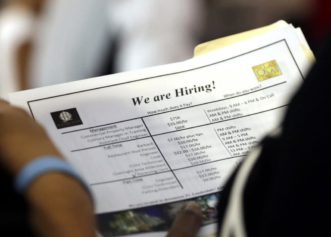
Based on Labor Department data, it appears the U.S. economy added 217,000 jobs in the month of May, which is a solid number but lower than the two-year high of 288,000 posted in April. The Labor Department indicated May’s job increase mostly came from the service sector and medium- to small-sized businesses.
“Job growth moderated in May,” said Mark Zandy, chief economist for Moody’s Analytics. “The job market has yet to break out from the pace of growth that has prevailed over the last three years.”
The solid hiring in May is an indication that the economy has fully recovered from the winter slump due to bad weather.
U.S. employers maintained a solid pace of hiring in May, returning employment to its pre-recession level and offering confirmation that the economy has snapped back from a winter slump. For the fourth straight month, job gains have been above 200,000 — an important indicator of a recovery for economists.
Economists ironically predict that a rise in the unemployment rate throughout the year actually might be a sign of further recovery, as more previously discouraged workers re-enter the labor force.
Earlier this year an article by Philip Bump on TheWire.com pointed out that the Black unemployment rate has always been at least 60 percent higher than the white rate since the government began collecting separate data in 1972.
Bump’s story said the closest the two unemployment rates have ever been was in August 2009, right after the official end of the recession. At that time, the jobless rate for Blacks was 14.8 percent, while it was 8.9 percent for whites. Clearly the numbers were so close because the white rate was so high; Black unemployment has been over 10 percent more than three-quarters of the time since 1972.


